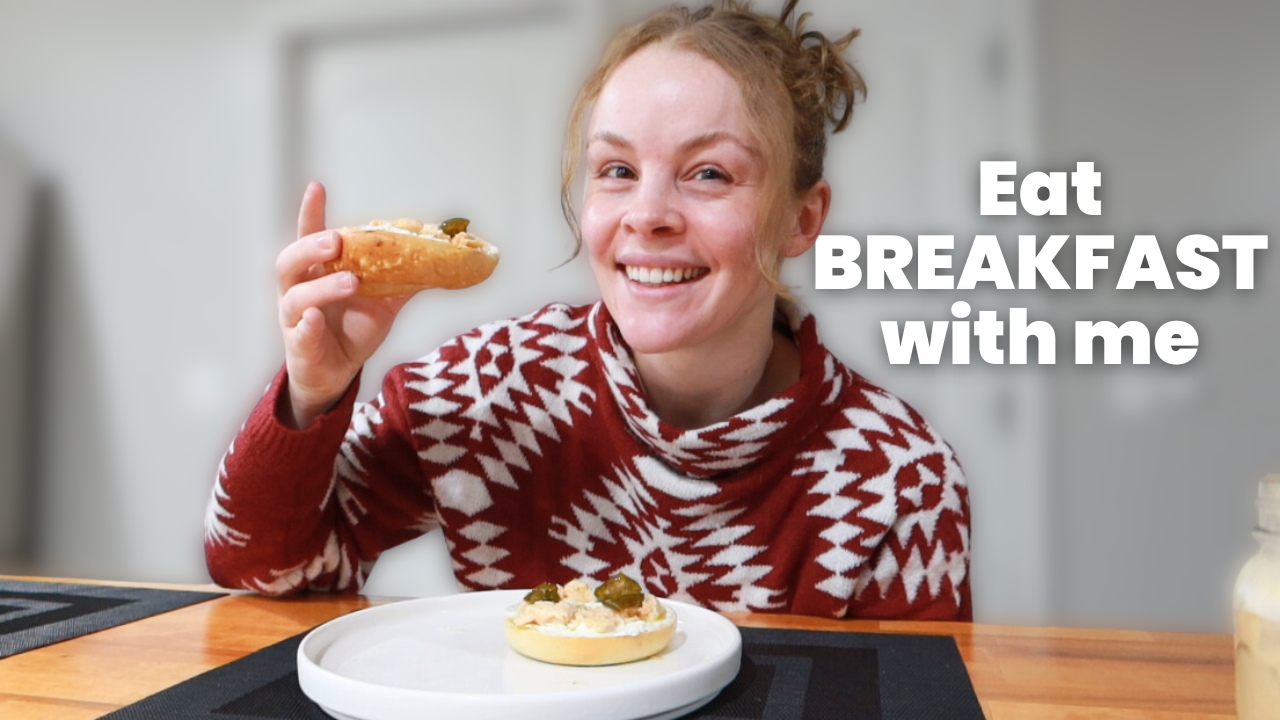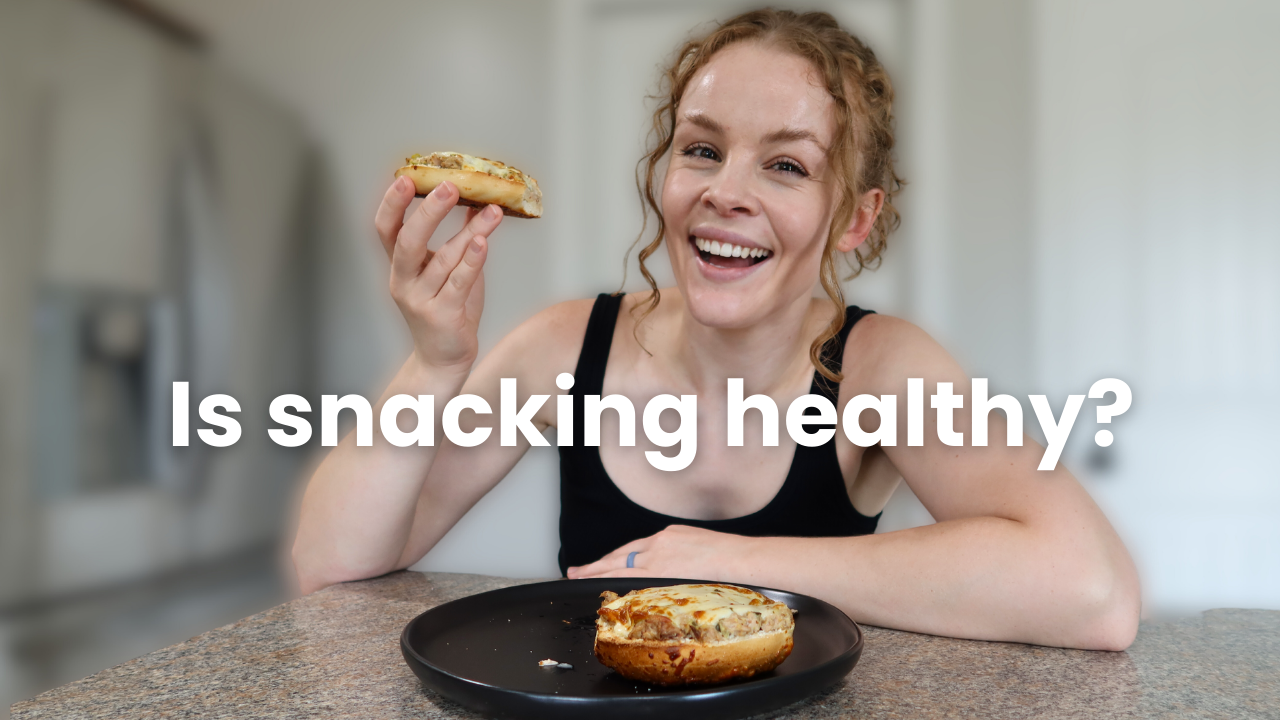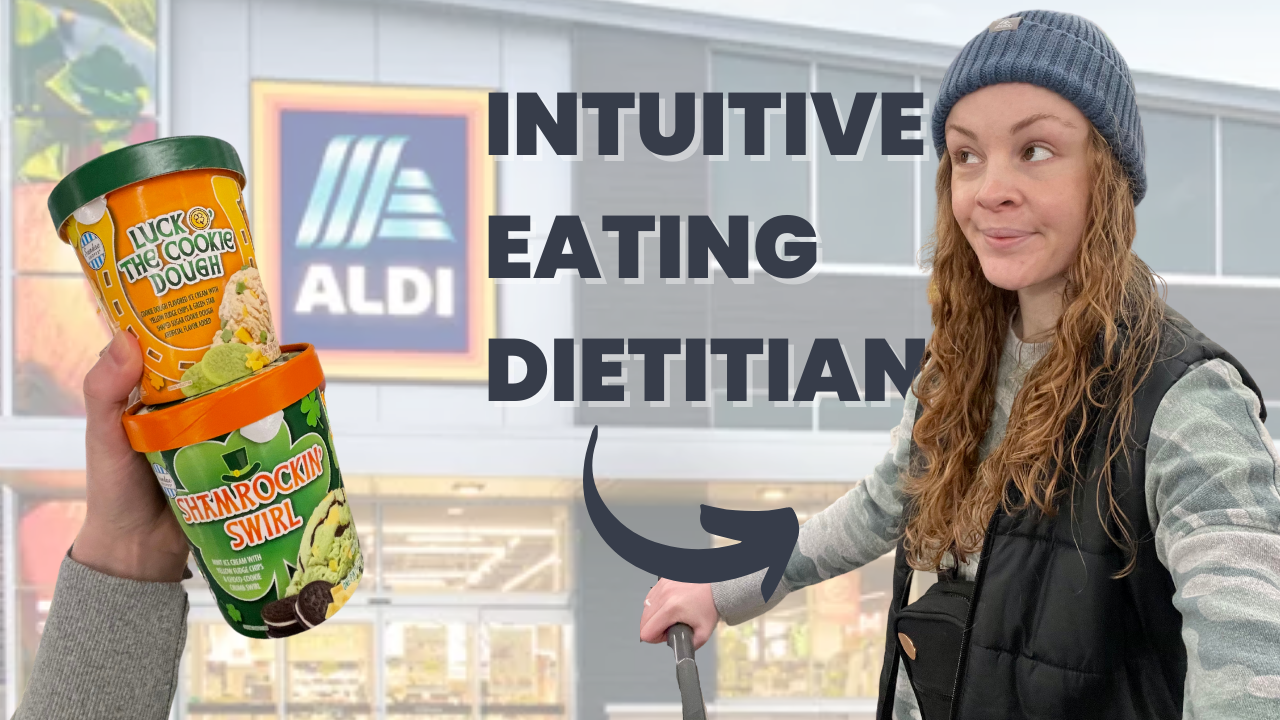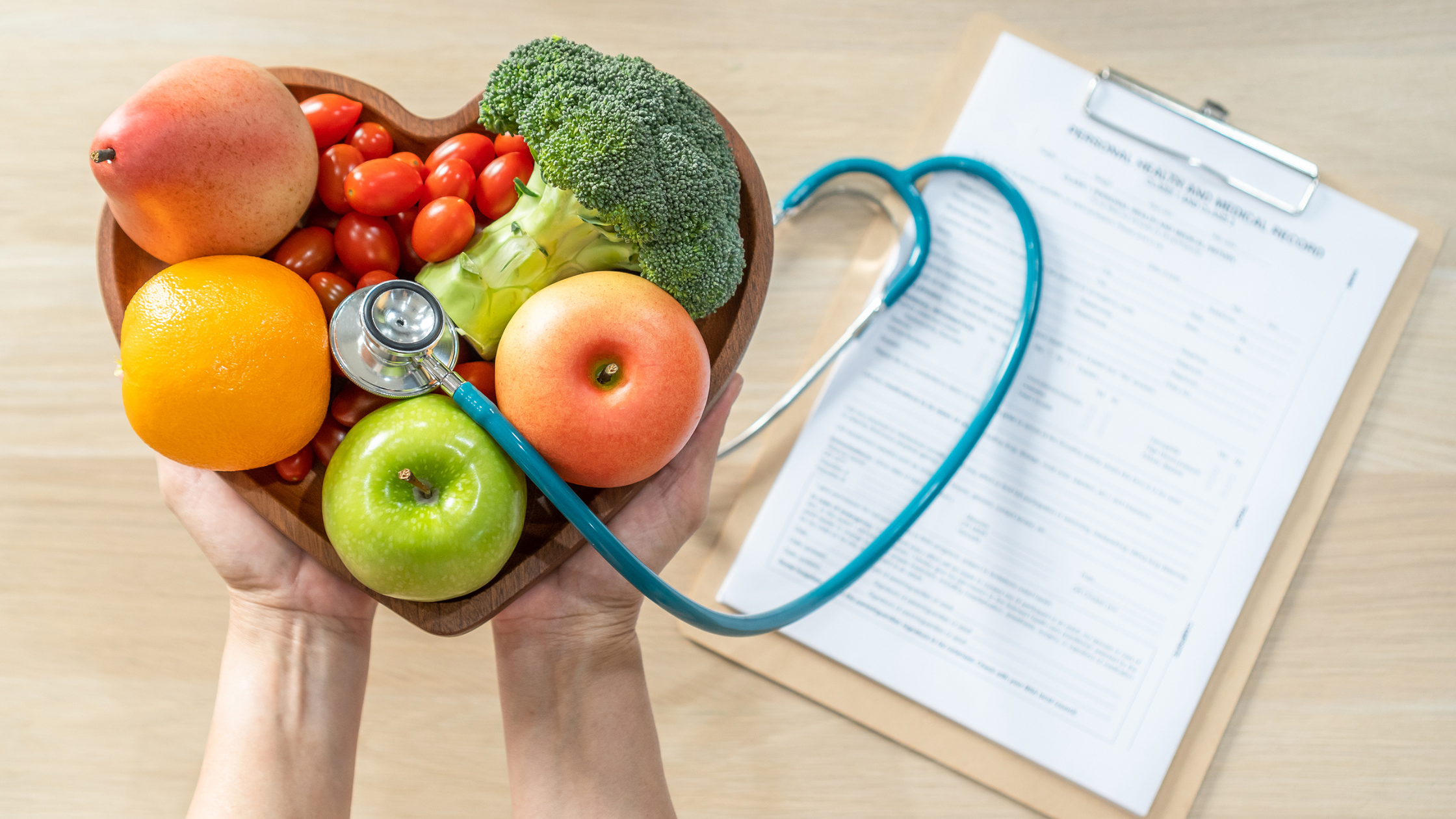How to Choose What to Eat With No Food Rules
When first introduced to intuitive eating, many people are presented with the problem of not knowing what to eat when there aren’t any food rules telling them what is “allowed” or “not allowed”.
Eating in a way that makes us feel good not only involves being considerate of how we eat, but also what we eat. And contrary to popular belief, intuitive eating is not just eating “junk food” all the time.
So, how do intuitive eaters choose what to eat without a strict meal plan or diet rules to follow?
If you’re new here, hello and welcome! My name is Hannah and I am a non-diet dietitian here to help you improve your relationship with your food and finally find food freedom.
Make sure you are eating enough
First off, make sure you are eating consistently and adequately. For most people, this looks like eating something every 3-4 hours or so throughout the day. It will also help to include a variety of macronutrients (protein, carbs, and fats) at your meals and snacks.
When we get too hungry, it becomes even more difficult to decide what we want to eat. We can think much much more rationally when our brain has the fuel it needs.
Stop aiming for perfection
Fed is best. Yes, this applies to babies and adults and every age in between.
Not every meal that you eat is going to be mind-blowingly delicious or have the optimal balance of nutrients. And that’s okay. If a meal you eat really is unsatisfying, remember that you will get to eat again. This is the one indefinite thing in life - you always get to eat again!
Don’t spend too much time thinking about the food choice. This will just get you caught in a rabbit hole of decision making and as you find yourself getting increasingly hungry.
Choose your carbohydrate source
Okay, now for the practical tips. I often find it helpful to choose my carb source as the base of my meal and then consider how I can add protein, fats, and vegetables to it. Remember that not every meal will have all of these components, they are just the options to consider!
For example, do I want to use rice? Pasta? Make a sandwich on bread? Carbohydrates are intended to be the largest chunk of our calorie intake throughout the day, which is why I find it beneficial to choose this as the starting point. Plus, they taste good and that makes me feel excited to eat the meal or snack!
There are times where I will start by choosing my protein source instead. For example, if I found salmon on sale at the grocery store, I may choose my additional food groups based on the fish. Or, if I have leftover ground beef that needs to be eaten, perhaps I will create a dish based on that.
Consider the other sensual qualities of the food
Did you know that our enjoyment and satisfaction of a food choice is not just about how the food tastes? The way that our food looks, smells, along with its mouthfeel and temperature all play a role as well.
When you are choosing what to eat, ask yourself what sensual experience you are in the mood for. Do you want soft food or crunchy food? Hot or cold food? A combination of both? Are you wanting sweet or savory? Maybe start with savory and end with sweet?
The combinations are endless and sometimes you won’t know if a food will be satisfying until you start eating it. You have permission to change it up, add to it, or choose something completely different if your initial choice isn’t quite cutting it.
Also keep in mind that not every meal with be the best ever and that you will get to eat again. It’s all a learning experience! Take mental (or physical) notes of what you like and dislike about the meals and snacks that you have.
Consider the difficulty of the choice
Remember how I said that it is about more than just how a food tastes? For many people, the steps required to actually prepare and eat the dish can also be considered.
Here are a few examples of what questions to ask yourself:
Do I want something that is a little more complex to make? Or something easy?
Do I mind getting my hands dirty while cooking and eating? Or would I prefer something that I can use a fork for the entire time?
What about while I’m eating? Do I want to have to assemble each bite (like a charcuterie-style snack plates)? Or would I rather have a bowl of something that I can just scoop into my mouth?
These questions are especially important to ask yourself if you struggle with feeding yourself due to depression, ADHD, and the like.
Make a list of safe meals
Jot down your go-to safe meals and snacks that you can turn to when you know that you need to feed yourself but you are feeling stuck on choosing what to eat. This might include a list on your phone, a Pinterest board, or something you write in a journal.
An important piece to this is to keep ingredients on hand for these meals. This will likely include ready-to-eat processed foods, and that’s okay.
For example, I usually have the ingredients to make a deli meat sandwich. My husband loves peanut butter butter and jelly sandwiches as his safe go-to meal. I also like to make rice bowls with rice, leftover meat and veggies, and a sauce. All super easy, filling, and I can keep most of these ingredients in my pantry or freezer.
Practice
Remember that you get to eat at least 3 times each day. In fact, I generally recommend eating more by including snacks as needed or desired.
Each of these eating occasions can be time to practice a new skill, play around with new foods or combinations of food, etc. As previously mentioned, make notes about dishes you enjoyed, textures that you found satisfying, and safe meals that you can always turn to.
Bottom line - how do intuitive eaters choose what to eat?
While there are many steps and decisions behind making a food choice, this will become more natural and nearly subconscious with practice.
When you first ditch the diets, it may feel like you are over thinking everything that you eat. This will get easier! Give yourself grace and remember that there is no such thing as doing it “perfectly”.
Remember that this tips in this blog are not rules, just helpful guidelines. It’s okay if your plate is not always balanced, colorful, or a variety of textures and flavors. More times than not, keeping it simple will do the trick.
Watch some of my full days of eating to see these tips in action
Want more help on your diet ditching journey?
Join my signature membership to become part of a community of ex-dieters working towards food freedom and making peace with food so they no longer need to cut out their favorite foods.






























































